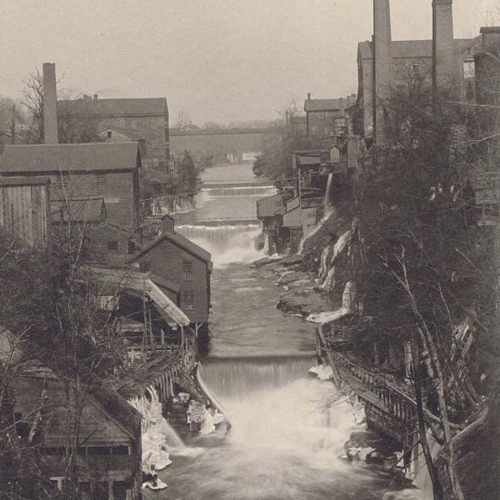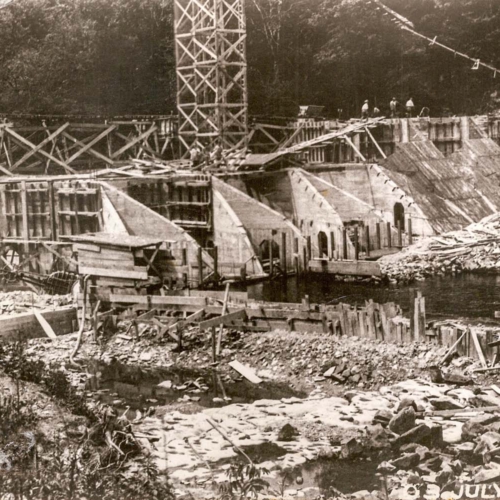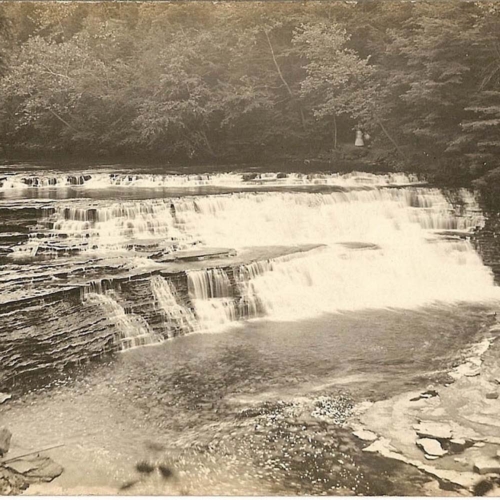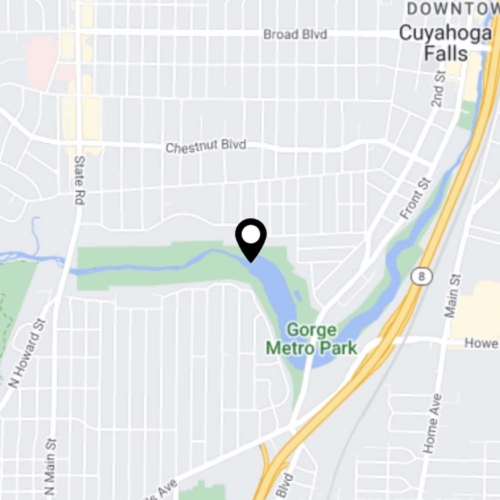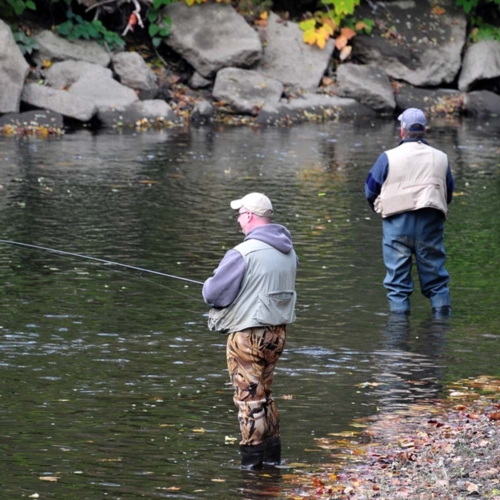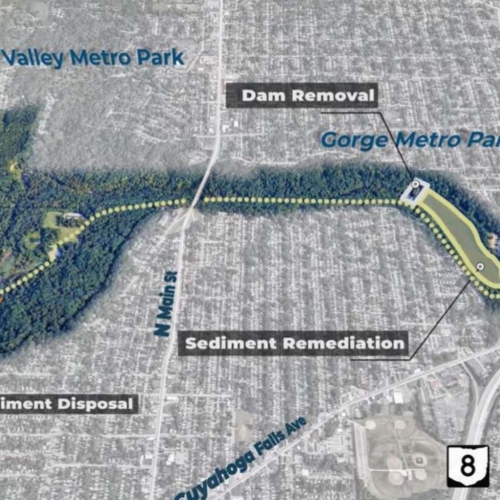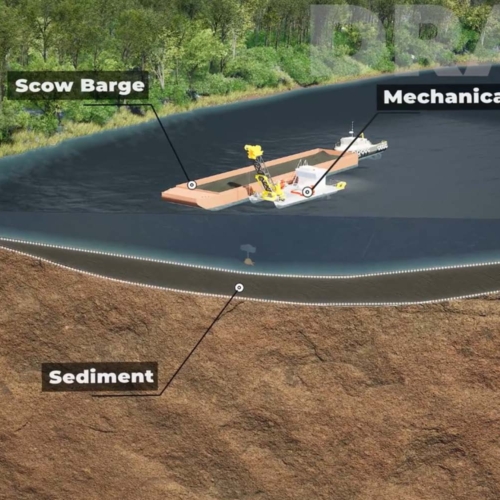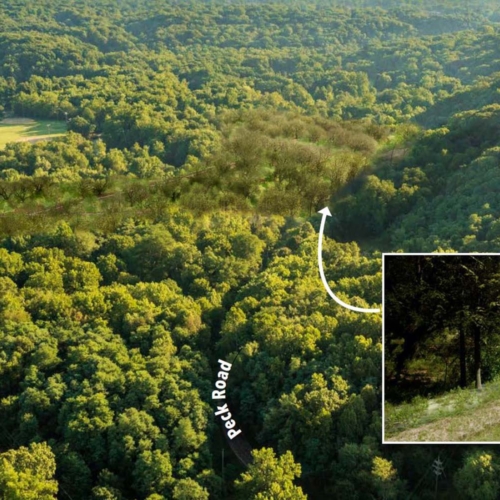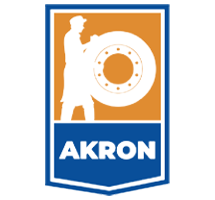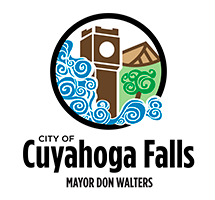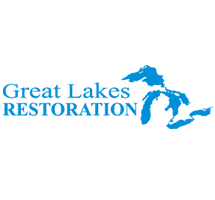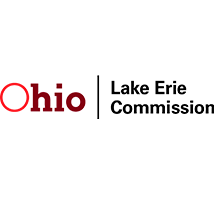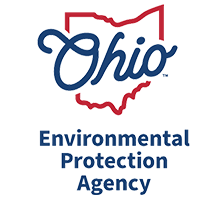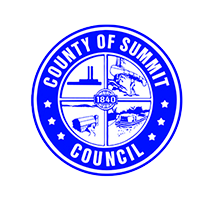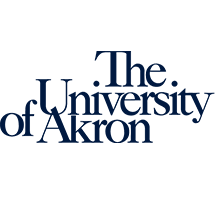Project Updates
Free the Falls
A project of national significance
Summit Metro Parks and a large coalition of community partners are working together to remove the dam on the Cuyahoga River in Gorge Metro Park. Built more than 100 years ago, the Gorge Dam is no longer serving any useful purpose. In fact, today it is the largest remaining water quality impediment on the Cuyahoga River. Dam removal is necessary to improve wildlife habitat and address contaminated sediment within the river. It will also create recreational opportunities and drive economic development.
Free the Falls Podcast
Find the best dam news and updates on the new Free the Falls podcast, available now!
FAQs
Local residents have been long anticipating the removal of the Cuyahoga Gorge Dam. There is continued strong interest in the restoration of the river. Contact Summit Metro Parks with questions and feedback.
October 25, 2023 public meeting
U.S. Environmental Protection Agency (U.S. EPA) and its partners announced a project agreement totaling more than $100 million. These funds will clean up nearly 875,000 cubic yards of contaminated sediments from behind the Cuyahoga River Gorge Dam. The partnership is between U.S. EPA and four non-federal sponsors: the Northeast Ohio Regional Sewer District, the City of Akron, FirstEnergy/Ohio Edison Company and Ohio EPA. Additionally, Summit Metro Parks, City of Cuyahoga Falls, and Summit County will support this project through financial and technical support. Watch the meeting.
October 31, 2022 public meeting
Members of the public received an update on the sediment remediation process, schedule and cost of the project. The Gorge Dam Stakeholder Group also announced that initial tree clearing work will begin soon and that the City of Akron’s NSIT sewer project will require major construction work in the same area. Watch the meeting.
April 9, 2019 public meeting
The Gorge Dam Removal Stakeholder Group discussed a hydrological study and the Great Lakes Legacy Act partnership
March 22, 2018 public meeting
The Gorge Dam Removal Stakeholder Group discussed a hydrological study, ecosystem impacts, and removal of the Gorge Dam
June 27, 2017 public meeting
The Gorge Dam Removal Stakeholder Group educated residents about dam removal impact
September 21, 2016 public forum
WKSU forum to discuss removal of the Gorge Dam
September 24, 2015 public meeting
Held by Ohio EPA
Built in 1911, the Gorge Dam was originally constructed to support hydroelectric power generation and to provide cooling water for a nearby coal-fired power plant. Both power plants have been shuttered for decades, and the dam performs no useful function.
The dam is located in a unique section of the Cuyahoga River. The river was formed about 12,000 years ago when the Wisconsin glaciers retreated to their northern origins. As the river was forming, it encountered a large deposit of bedrock about halfway along its current course, at what is now Cuyahoga Falls. This rock turned the south-flowing river northward, giving the river its unique “U” shape. This distinctive geology gave rise to a wealth of sturdy plants and animals that could secure a living in this cool, wet rock environment. This area is also where the river drops 200 feet in a short, two-mile section.
With rocky outcrops, caves and dramatic scenery, the area where the river turns towards the north has attracted visitors for more than 150 years. Coming from near and far, outdoor enthusiasts once flocked to the Gorge to view the Big Falls of the Cuyahoga, and to enjoy amusement park rides, dance halls, picnicking and more. And that tradition continues today at the 155-acre Gorge Metro Park.
The Gorge Dam is situated on the Cuyahoga River in Gorge Metro Park, part of 1,900 acres of contiguous green space that also includes Cascade Valley and Sand Run Metro Parks in Summit County. The dam is in Cuyahoga Falls, near Akron. The dam lies within the Cuyahoga River Area of Concern.
The Gorge Dam is one of the largest remaining unresolved water quality problems for the Cuyahoga River. In addition to restoring water quality, removing the dam and the sediment behind it will restore the original grandeur of the Gorge, creating a vibrant future for the river, its watershed and its people. That future will provide clean water, natural beauty, recreational opportunities and economic development for all to enjoy.
Dams have significant water quality implications. In addition to being a physical barrier to fish passage, dams negatively affect the dissolved oxygen, flow and temperature of the river. They also reduce habitat, trap and concentrate sediments and toxins and alter the food web. On the Cuyahoga River, dams have been shown to adversely impact aquatic life. They alter the natural river aquatic communities, which are restored after the dam is removed.
During dam removal, the City of Akron’s ongoing sewer system upgrade requires construction work in the same area. While both projects are being carefully planned and coordinated to minimize disruptions to the public, there will be park and trail closures at both Gorge Metro Park and Cascade Valley Metro Park over the next several years, and both parks will undergo significant changes before they are reopened. The public will be invited to participate in a master planning process.
Please see the video above for more information on the type of work that will be required. Temporary closures will be posted on the Summit Metro Parks Park & Trail Alerts page.
The project is currently in the second of four phases. In Phase I, Ohio EPA completed a cost estimate and feasibility study.
In Phase II, project partners are studying the best method for removing and storing the vast amount of contaminated sediment that has accumulated behind the dam over the past century.
In Phases III and IV, sediment will be removed from the dam pool before deconstruction of the dam itself. The final step of the project will be to restore the river channel through Gorge Metro Park to assist the river and surrounding landscape in returning to its natural state.
There is currently no firm timeline for project completion. Construction will last several years and is expected to coincide with the City of Akron’s sewer tunneling project in the same area (known as the Northside Interceptor Tunnel, or NSIT).
Before the dam can be deconstructed, nearly one million cubic yards of sediment must be removed from behind it. The sediment has been collecting for 100 years and contains pollutants consistent with the area’s industrial past.
A mechanical dredge system consisting of a clamshell bucket, crane and a scow barge will troll the reservoir, slowly removing sediment scoop by scoop. This work will likely be completed over two construction seasons. Each full scow barge will then be unloaded at the staging area, where it will be screened to remove any large debris.
The still-wet sediment will then be pumped through a temporary pipeline under the Front Street Bridge and then alongside Highbridge Trail. It will continue under the High-Level Bridge at North Main Street to the Chuckery Area of Cascade Valley Metro Park, about two miles from the dam.
The Chuckery Area is historically a dumping site and will be utilized as the permanent disposal area for the contaminated sediment. To make room to store the sediment and concrete mixture, trees must be removed from a portion of the Chuckery Area.
The sediment is mixed with concrete in the pipeline to form a more solid material that can be contoured before it is fully stabilized. This is an innovative and safe approach that has been used at sites across the country. The disposal area is designed to ensure permanent stabilization of the sediment mounds, minimize impacts to buried utilities, and appropriately manage stormwater.
After final grading is complete, the sediment mounds will be capped with soil and the area will be planted with a native mix of trees and vegetation, and contoured to look as natural as possible. The final conditions will result in a biodiverse habitat that will complement the natural beauty of the Cascade Valley Metro Park.
Archaeological and historic resources in the project area are being assessed pursuant to Section 106 of the National Historic Preservation Act of 1966 (NHPA) (codified as CFR 800), which requires federal agencies to take into account effects of an undertaking on historic properties. Historic properties are any prehistoric or historic districts, sites, buildings, structures, or objects that are eligible for or already listed in the National Register of Historic Places.
Learn more about the cultural resources in and around the Gorge through a presentation and photo archive.
Public involvement is part of the process! We invite your comments on the effects this project may have on historic properties (archaeologic or historical sites, structures, or features). Comments can be made via:
Online form
Email
Comment using our form to: Dr. Megan Shaeffer, Cultural Resources Supervisor, 975 Treaty Line Rd., Akron, OH 44313
June 2023 E-Newsletter
March 2023 E-Newsletter
December 2022 E-newsletter
Cuyahoga Gorge Dam data gaps assessment (PDF, 10p, 1.5MB) March 2019
Feasibility Study for the Removal of the Gorge Dam (PDF, 66p, 5MB) September 2015


